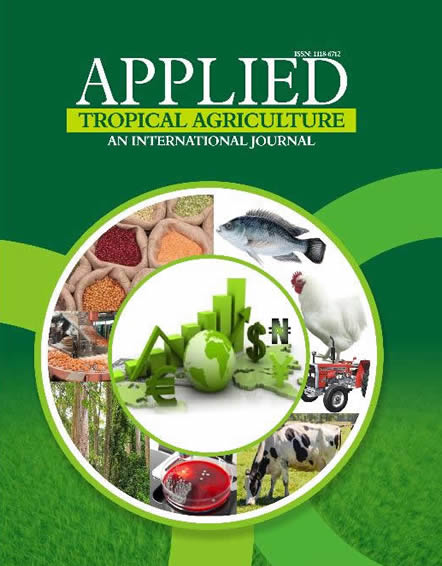Two field experiments were conducted each in 2011 and 2012 in Akure, Ondo State, located in the rain forest zone of Nigeria. The study evaluated the efficacy of some selected herbicides for weed control in maize (Zea mays L). Each experiment was laid out in a randomized complete block design (RCBD) involving four replications per treatment. The treatments were: (1) weedy check where no weeding occurred, (2) glyphosate only at 1.44kg a.e ha-1, (3) glyphosate at 1.44kg a.e ha-1 + weeding at four weeks after planting (4WAP), (4) glyphosate at 1.44kg a.e ha-1 + weeding at 7 WAP, (5) paraquat only at 0.41kg a.i ha-1, (6) paraquat at 0.41kg a.i ha-1 + weeding at 4 WAP, (7) paraquat at 0.41kg a.i ha-1 + weeding at 7 WAP, (8) atrazine (80 WP) at 3.00kg a.i ha -1, (9) Primextra (500 F) at 3.00kg a.i Ha -1 and (10) hand weeding at 3 & 7 WAP, respectively. Data were collected on maize plant height, stem girth, number of leaves, maize cob length and girth, grain yield as well as weed flora, weed density, and percentage herbicidal efficacy on weed density. Results showed that weed flora identified with maize production were different for both locations; plots treated with atrazine plus metolachlor (Primextra) gave better performance in terms of maize growth. Maize cob length and grain weight were higher in plots treated with atrazine (80WP) at 0.41kg a.i/ha. Results further indicated that herbicidal efficacy was higher (61%) in plots treated with glyphosate plus weeding at 4 WAP but did not differ significantly (p<0.05) from other treatments. It was therefore concluded that glyphosate supplemented with hand weeding at good timing can be adopted for effective weed control in maize.
PAPER TITLE :EVALUATION OF SELECTED WEEDING METHODS FOR WEED CONTROL AND PERFORMANCE OF MAIZE IN SOUTH WESTERN NI
APPLIED TROPICAL AGRICULTURE | VOLUME 21 NUMBER 1 2016
Paper Details
- Author(s) : Olatunji, A., Adejoro, S.A., Ayelari, O.P., and Aladesanwa, R.D.
- Abstract:


